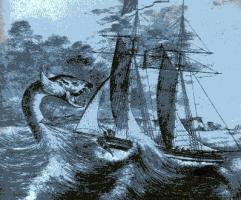Copy Link
Add to Bookmark
Report
Cider Digest #0853

Subject: Cider Digest #853, 15 March 2000
From: cider-request@talisman.com
Cider Digest #853 15 March 2000
Forum for Discussion of Cider Issues
Dick Dunn, Digest Janitor
Contents:
Apples for Zone 4 ("Luedtke, James [Minn]")
Re: Cider Digest #852, 7 March 2000 (Ian Merwin)
What varieties to plant? ("Matt Birchfield")
Ace again (Dick Dunn)
Send ONLY articles for the digest to cider@talisman.com.
Use cider-request@talisman.com for subscribe/unsubscribe/admin requests.
When subscribing, please include your name and a good address in the
message body unless you're sure your mailer generates them.
Archives of the Digest are available for anonymous FTP at
ftp://ftp.stanford.edu/pub/clubs/homebrew/cider.
----------------------------------------------------------------------
Subject: Apples for Zone 4
From: "Luedtke, James [Minn]" <James.Luedtke@cgiusa.com>
Date: Tue, 7 Mar 2000 13:52:26 -0500
I know this subject has been addressed before, but I believe it's been well
over a year. That is, what cider varieties survive (and hopefully flourish)
in Zone 4? When hardiness is addressed in catalogs, I can't seem to find any
that are recommended for anything colder than Zone 5. I am hopeful that the
lack of information tends to mean that they have not been much tested in my
zone, rather than that they failed.
In the March 7 digest, Claude Jolicoeur lists his orchard as Zone 4, and
includes Yarlington Mill and Bulmer's Norman as producing varieties. Thank
you Claude, for this good news that at least those varieties can stand the
cold. I do wonder though, does the St Lawrence modifies the extreme
temperatures in your area?
Last year I planted Yarlington Mill and Tom Putt. This year I have ordered
Foxwhelp, Dymock Red, Harry Masters Jersey, Bulmer's Norman and Breakswell
Seedling. I chose these for their harvest dates all in late September or
October. Many other varieties are listed as ready for harvest in November,
which for my location is opting to let Jack Frost have his way in most
years.
Does anyone else have more hardiness information on cider varieties? If not,
maybe I can just count on soon being in Zone 5 or 6 as a side benefit of
global warming.
Jim Luedtke
Excelsior, MN
------------------------------
Subject: Re: Cider Digest #852, 7 March 2000
From: Ian Merwin <im13@cornell.edu>
Date: Tue, 7 Mar 2000 15:52:19 -0500
Folks-
Oops! Sorry...I was wrong in my last message about the absence of tannins
tables in Downing's (1989) book on Processed Apple Products. Much to my
chagrin, Andrew Lea was entirely correct! Information on tannins in
apples, is presented in a table of R. Labelle's data on page 180 in D.L.
Downing's chapter 8 of that text (it was not cited in the index, hence I
had not found it previously). Thanks for the correction, Andrew...I should
have known better than to doubt your memory! This is the same table of
information that I have in handwritten form, so there is no need for me to
send it on to anyone unless Downing's book is unavailable to them.
After reading that chapter of Downing's, I want to point out another
interesting table on the previous page with information on the harvest
dates of European cider apples at Geneva, NY (For reference, Geneva NY is
in USDA climate zone 5-b, with about 2600 growing degree days calculated to
the base temperature of 50 F, average last frost date in early May, typical
first frost date in mid October). It's worth noting the discrepancies
between Downing's harvest dates (credited to R. Way, 1982) and the typical
harvest dates given for these same varieties in Morgan and Richard's "Book
of Apples" for English orchards. For example, Kingston Black ripens around
Sept. 15th in New York, vs. "early Nov." in England; Tremblett's Bitter
ripens around Sept. 25 in Geneva vs. "early to mid Oct." in England; and
Dabinett ripens Sept. 25th in Geneva, vs. "Nov." in England. This is
consistent with my preliminary observations on harvest dates and
performance of European cider apples in my home orchard near Ithaca NY.
Apparently the European varieties will need to be grown and evaluated in
each region of North America before we will know for certain which ones are
best adapted to our various growing regions.
*************************
Ian Merwin (im13@cornell.edu)
Associate Professor of Pomology
118 Plant Science Bldg.
Dept. of Fruit and Vegetable Science
Cornell University, Ithaca, NY, 14853
Tel. 607-255-1777
URL. http://www.fvs.cornell.edu/Faculty/php/IanMerwin/iam.html
------------------------------
Subject: What varieties to plant?
From: "Matt Birchfield" <peridot@usit.net>
Date: Tue, 7 Mar 2000 15:58:06 -0500
Hello Cider Makers,
I have space for 5 dwarf (possibly a couple of them semi-dwarf) apple trees
in my yard, and would like your input on the best varieties to plant. I
want to make good non-alcoholic cider, ferment some of it, and have apples
available for cooking, eating fresh.
Can anybody recommend a variety of species that will fit my goals, or am I
asking for too much from a very small personal orchard?
I have a Stark Bro's Catalog ... my father ordered trees from them and they
all bore fruit in their second year, just like the catalog said they would,
so I believe their claims in this regard. Have any of you used this
company? If so, which of their varieties would you recommend for ciders?
Thanks in advance,
Matt
New River Valley, VA
------------------------------
Subject: Ace again
From: rcd@raven.talisman.com (Dick Dunn)
Date: 14 Mar 00 23:23:23 MST (Tue)
I had posted a note here a while back (Digest 850) about Ace Cider's web
page and claiming to have "perry"...when in fact what they have is a pear-
flavored cider. I sent them a note at the same time as I posted here, and
got a reply suggesting that their web-page designers may have been over-
zealous, and that they would contact them. We'll see if that happens
eventually, but they haven't exactly leapt to correct it.
Moreover, I've found the time to head down from Hygiene to civilization-as-
we-know-it and check some ingredients. While I didn't find artificial
flavoring in the Ace apple (as Carolyn Wood did in 851), the ingredient
list on the "Pear Cider" distinctly does indicate artificial flavoring,
in two different incarnations of the label that I found. This does not sit
well with the encouragement I got from them (from replying to their web
site reply address) to consider their pear cider an exceptional natural
product.
I think I don't like this at all. Their Pear Cider contains added malic
acid (that's usually used to add an impression of apple taste), sulfite
and sorbate (why both?!?), pear flavoring or essence depending on your
reading (what's wrong with just fermenting pears???) and artificial
flavoring (sorry, *NO* excuse to be made for that).
- ---
Dick Dunn rcd@talisman.com Hygiene, Colorado USA
...Simpler is better.
------------------------------
End of Cider Digest #853
*************************























